TOP-5 ideas for diving in the Dominican Republic
21 Dec 2017
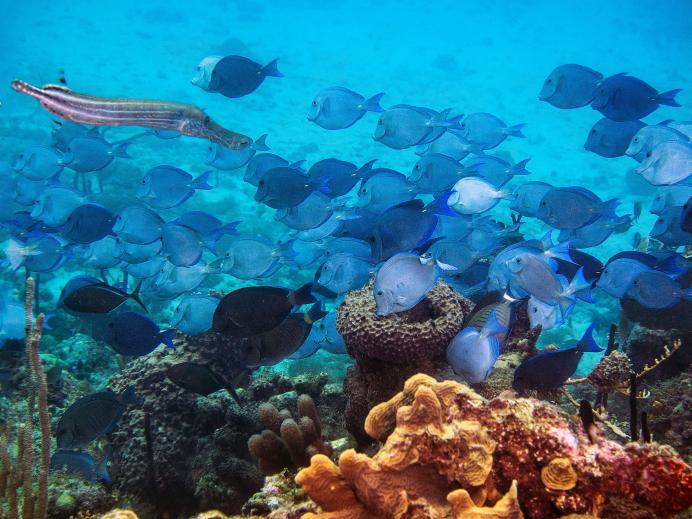
The Dominican Republic Ministry of Tourism will be represented at Moscow Dive Show 2018. At booth F 5/1 you will be able to learn about the best and newest dive routes of the Dominican Republic, the most favorable and reliable tour operators, hotels and transfers, discounts and promotions.
The Dominican Republic is a great place for diving: the Atlantic Ocean and the Caribbean Sea, coral reefs and unique underwater caves, sponges, exotic fish and 40-ton whales, wrecks – old, witnesses of sea battles between pirates and the royal fleet, and new ones sunk specially for divers. For those who do not know anything about diving in the Dominican Republic, see the TOP- 5 main dive (and not only) sites below.
In the late 1970s, The Hickory was used to inspect and raise artifacts - jewelry, glass work, silver and coins, from the two eighteenth-century ships: Nuestra Senora Guadalupe and El Conde de Tolosa. More than 600 people on board these ships drowned in rough waters.
Today The Hickory slowly rusts and turns into a coral reef at the bottom of the Caribbean Sea. La Caleta is an ideal place for diving, where you can not only do wreck diving, but also enjoy fish, corals and giant sponges.
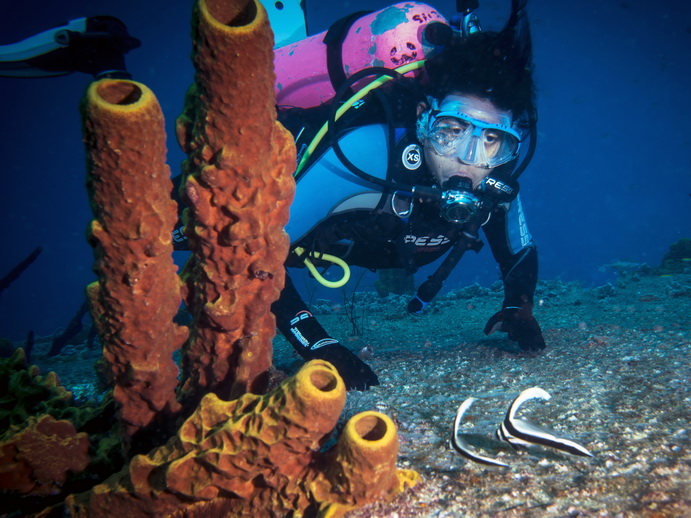
In the eastern part of the Dominican Republic, there are several excellent places for diving: the islands of Saona and Catalinita.
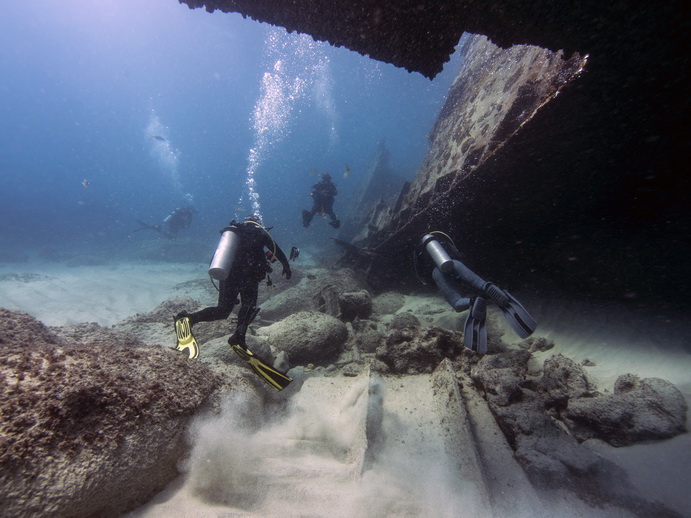
For a long time Catalina was forgotten even by the locals, thanks to which the pristine nature is preserved here. Local mangroves, coral reefs and sand dunes are protected by the state. The brightest underwater attractions are located at a 20-meter depth. Catalina is famous for its two dive sites: Aquarium and The Wall.
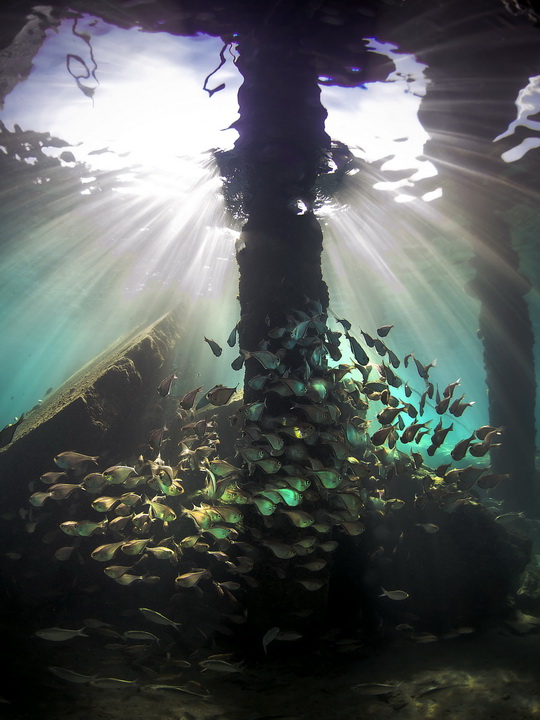
The island provides especially favorable conditions for the growth of large sponges. Among the yellow, purple and brown tubular sponges, the branch ones stand out particularly: they grow on a single base and resemble large saxophones and trombones with wide mouths. There are large barrel-shaped sponges, inside of which small fish and crustaceans seek shelter. Among the sponges, soft and hard corals, one can see the blue gorgonias spread out like a fan. Such an abundance of sponges and gorgonias attracts many tiny polyps. As you go further down, you can see the orange gorgonians. Thanks to large clusters of multi-colored sponges and gorgonias, the bottom of the Caribbean Sea resembles the artist's palette. Visibility in these waters is over 30 m.
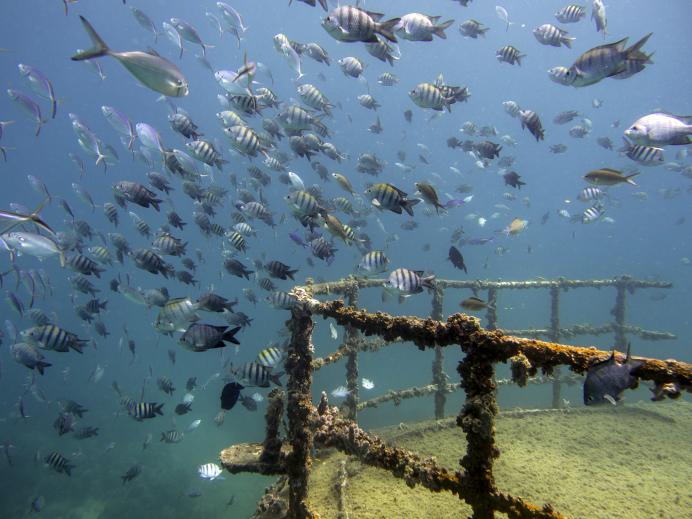
After having explored the south and the east, you can go to the north of the country. It is noteworthy for the Amber Coast: Puerto Plata, Sosua and Cabarete. This area boasts the richest deposits of black amber. The large coral reef forms a peninsula, the top of which is at a depth of 5 meters, and the base – at 20 meters. Between Puerto Plata and the Bay of Sosua there is a place known as La Pista, which has 3 huge underwater ergs, 16 m high, with huge coral colonies.
Puerto Plata in Spanish means "silver port”. There’s Fort San Felipe, which since 1540 defended the city from pirate raids with its inexpugnable walls.
Further to the east, along the northern coast of the Samana peninsula, at a depth of 10-16 meters there are numerous reefs and rock systems with underwater caves, tunnels and passages. To the west of the Puerto Plata province there’s a place with a dear to our heart name Punta Rucia, as well as untouched wild beaches, dirt roads and unexplored bottom of the Atlantic Ocean. This place attracts primeval nature enthusiasts.
In a small village by the ocean, there is a small tourist center frequented by snorkelers come and those who want to feel like Robinson Crusoe for one day.
Underwater there are turtles, rays, small sharks, dolphins. The slopes and ridges of the underwater canyons are covered with corals and sponges, the bottom is sandy, with small stones and coral islets. From the point of view of diving, these places have been little explored and are of great interest for divers-archeologists, wreck-divers and anyone who is not alien to the passion of pioneering.
Even farther west from Punta Rusia, there’s a part of the coast near Monte Cristi on the border with Haiti which attracts with its crystal clear water, untouched coral reefs and dozens of ships sunk in the 17th and 18th centuries.
There are also modern ships sunk especially for divers here, so that everyone finds entertainment after their own heart and skills.
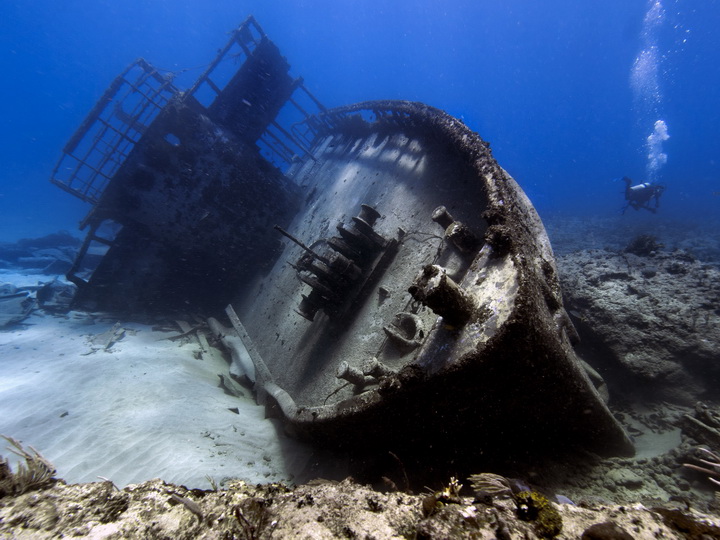
The expedition ship for treasure hunting El Hickory was built at the shipyards of the American Iron Work Corporation. 38 meters long, it lies at the bottom slightly inclined from the bow to the stern at a depth of 18 meters. The hull is thickly coated with beautiful soft corals. The four-bladed propeller is an excellent object for taking pictures and shooting movies. 30 meters from the ship there lie an old 2,5 meter bronze cannon and an anchor stock the 18th century. On the other side of the ship, there’s an old shark cage.
The cargo ship used for transportation of sugar, Tanya V, was sunken on October 21, 1999. Its length is 65 meters. It is located on a sand bank, at a depth of 22-34 m. Near the ship there live large groupers and green moray eels.
One of the most popular wrecks is a Norwegian bulk carrier St.Georges. The ship is close to the shore and the dive site can be approached in 5-10 minutes. According to the official legend, the bulk carrier sank in 1998 as a result of Hurricane George, but in fact it was specially sunken by the association of hotels in Bayahibe and therefore is well prepared for visiting by any divers, both experienced and beginners.
The Astron cargo ship, about 120 meters long, sank near the eastern shore.
The 50-meter dry bulk carrier Patricia sank list to port one kilometer off the coast at a flat bottom at a depth of up to 22 m.
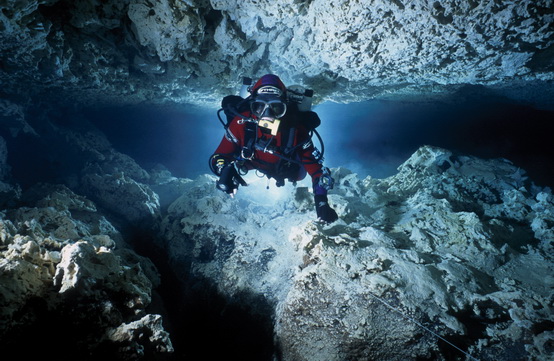
The Dominican Republic leads the world in the number of caves per unit of territory. Here there are over 5,000 caves, many of which are filled with water. Dominican caves are technically simple and accessible for divers with little experience, so many of them do not require special equipment or training.
The cave corridors with columns resemble ancient Greek temples, while the huge hall is referred to as the "throne room” by divers because of its size, magnificence and diversity of stalactites and stalagmites, and most importantly, thanks to the amazing architectural structure of the rock in the center of the hall reminiscent of a Medieval throne.
The maximum depth of the cave is 12 m, the total available length is about 120 meters, visibility is more than 100 meters. The cave has no air pockets, some corridors are quite narrow, therefore passage to such places is accessible only to experienced divers.
The cave starts with an almost round lake with the diameter of 60-70 meters. From this, there are three passages leading into the rock mass, two of them end with an access to another open lake, half the size of the first. The descent is very easy with cement stairs going down to the waters’ edge. Jump into the water and a fantastic picture of a fabulous underwater forest opens up before your eyes. The bottom of the lake is at a depth of 16 meters and is covered with trees fallen from the slopes of the surrounding mountains. Because of the fresh water highly saturated with limestone dissolved in it, the wood practically does not rot, and the trees gradually turn into stone while preserving the natural color of the bark.
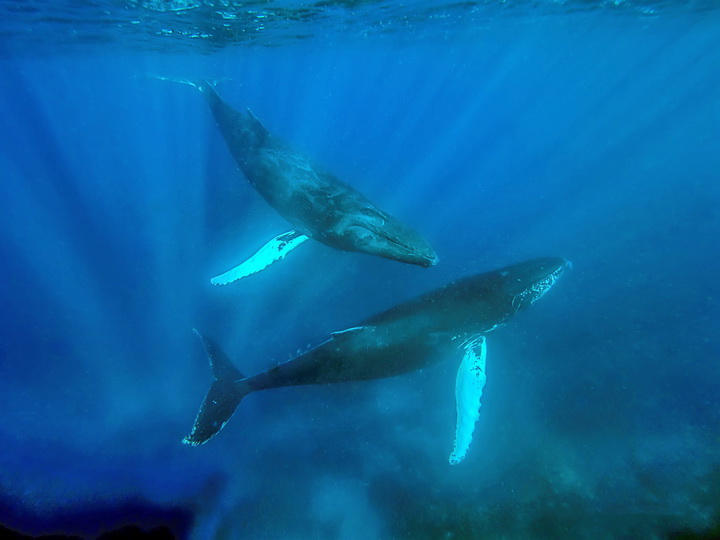
A small town of Cabarete in the Puerto Plata province is popular among active young people doing water sports. This is one of the best places in the world for windsurfing and surfing. There are at least a dozen sports schools there, every year there is windsurfing world cup for professionals and competitions for amateur windsurfers during Cabarete Race Week.
Places to the east of Puerto Plata are of no less interest, but more explored and habitable. These are a huge coral reef of Banco de la Plata and Samana Bay, at the bottom of which it is still possible to find wrecks.
Translated from the Indian dialect, Samana means "coconut land". Every year, between January and March one of the largest inhabitants of the sea depths ? humpback whales come to reproduce in the shallow and warm waters of the Samana Bay. Swimming 1,500 miles from the North Atlantic, these huge 60-ton mammals reproduce and go back north. Diving with whales is prohibited. But photographers take here a lot of pictures of the famous somersault style jumps and whales mating dance. Snorkelers can swim with whales and their calves ? humpback whales are one of the few animals that allow people to be among them and their newborns.
The Samana Bay is also a great place for those interested in wrecks and treasure hunting. The famous Spanish galleons Nuestra Senora de Guadalupe and El Conde de Tolosa are the most interesting and spectacular dive spots. In the 18th century, these ships transported a batch of mercury for the extraction of silver and gold from Spain to Mexico, and that was not the only valuable cargo on board. In the 20th century alone, various jewelry of precious metals and stones, as well as colonial style everyday items of the 18th century, were found by divers on the spots where galleons sank. Now these relics are kept in the museum of Santo Domingo: gold jewelry and coins, buttons, pottery, silver and tin utensils, jugs for oil, brass handles for scissors whose steel blades have been corroded, semi porcelain, playing cards, medallions, brass lanterns ? almost everything that could be found in a fashionable European house of that period.
Nevertheless, hundreds of old ships are still waiting for their discoverers at the bottom of the Samana Bay. By the way, one of the popular souvenirs that tourists bring from the Dominican Republic are ancient Spanish silver coins, which are sold in jewelry stores with the permission of the authorities, and the government provides them with a special certificate to distinguish genuine coins from counterfeits.
TOP-5 ideas for diving in the Dominican Republic

The Dominican Republic Ministry of Tourism will be represented at Moscow Dive Show 2018. At booth F 5/1 you will be able to learn about the best and newest dive routes of the Dominican Republic, the most favorable and reliable tour operators, hotels and transfers, discounts and promotions.
The Dominican Republic is a great place for diving: the Atlantic Ocean and the Caribbean Sea, coral reefs and unique underwater caves, sponges, exotic fish and 40-ton whales, wrecks – old, witnesses of sea battles between pirates and the royal fleet, and new ones sunk specially for divers. For those who do not know anything about diving in the Dominican Republic, see the TOP- 5 main dive (and not only) sites below.
1. FOR THOSE WHO ARE HERE FOR THE FIRST TIME
The Caribbean Sea is much calmer than the Atlantic, so the south side of the island is especially good for diving.La Caleta Underwater National Park
The park is located between Santo Domingo and Boca Chica near the shore in the water area protected by a coral reef. It was founded in 1984, when the 39-meter ship The Hickory was sunk here.In the late 1970s, The Hickory was used to inspect and raise artifacts - jewelry, glass work, silver and coins, from the two eighteenth-century ships: Nuestra Senora Guadalupe and El Conde de Tolosa. More than 600 people on board these ships drowned in rough waters.
Today The Hickory slowly rusts and turns into a coral reef at the bottom of the Caribbean Sea. La Caleta is an ideal place for diving, where you can not only do wreck diving, but also enjoy fish, corals and giant sponges.

In the eastern part of the Dominican Republic, there are several excellent places for diving: the islands of Saona and Catalinita.
Saona Island
It is the largest of the coastal islands with the area of 130 sq kilometers. Saona has about 1,200 inhabitants engaged in fishing, as well as hunting pigeons and wild boars. The island is surrounded by white sandy beaches with turquoise water; here and there, the beaches turn into thickets of mango-tree forests. In the coastal zone, you can see dolphins and sea cows ? dugongs, at the sandy bottom there are large colonies of starfish, as well as crustaceans: shrimps, crabs, lobsters. The underwater world in Saona is almost untouched ? there are walls, canyons and sea caves.
Catalina Island
Located between Boca Chica and Bayahibe, to the east of the Underwater park of La Caleta, the island is uninhabited and holds the status of a nature reserve.For a long time Catalina was forgotten even by the locals, thanks to which the pristine nature is preserved here. Local mangroves, coral reefs and sand dunes are protected by the state. The brightest underwater attractions are located at a 20-meter depth. Catalina is famous for its two dive sites: Aquarium and The Wall.

The island provides especially favorable conditions for the growth of large sponges. Among the yellow, purple and brown tubular sponges, the branch ones stand out particularly: they grow on a single base and resemble large saxophones and trombones with wide mouths. There are large barrel-shaped sponges, inside of which small fish and crustaceans seek shelter. Among the sponges, soft and hard corals, one can see the blue gorgonias spread out like a fan. Such an abundance of sponges and gorgonias attracts many tiny polyps. As you go further down, you can see the orange gorgonians. Thanks to large clusters of multi-colored sponges and gorgonias, the bottom of the Caribbean Sea resembles the artist's palette. Visibility in these waters is over 30 m.
Catalinita Island
It is located between the island of Saona and the coast of Bayahibe. This is where the Caribbean Sea and the Atlantic Ocean merge, so visibility sometimes drops to 12 and 15 m. The island provides ideal conditions for large fish and you can find untouched reefs near which there are southern thorny skates, reef sharks, nurse sharks, large barracudas and groupers, and in burrows and crevices you can see large royal crabs and lobsters.Punta Cana
Home to the longest coral reef located in the east, which shelters the coastline of Macau - Bavaro-Punta Cana and in some places protrudes above the sea surface. Island-ward, the reef gradually turns into a magnificent sandy beach, and on the outer side, it descends to a depth of 33 m and more. In the strait of La Mona, swimmers sometimes meet coral sharks.2. FOR PATH-BREAKERS

After having explored the south and the east, you can go to the north of the country. It is noteworthy for the Amber Coast: Puerto Plata, Sosua and Cabarete. This area boasts the richest deposits of black amber. The large coral reef forms a peninsula, the top of which is at a depth of 5 meters, and the base – at 20 meters. Between Puerto Plata and the Bay of Sosua there is a place known as La Pista, which has 3 huge underwater ergs, 16 m high, with huge coral colonies.
Puerto Plata in Spanish means "silver port”. There’s Fort San Felipe, which since 1540 defended the city from pirate raids with its inexpugnable walls.
Further to the east, along the northern coast of the Samana peninsula, at a depth of 10-16 meters there are numerous reefs and rock systems with underwater caves, tunnels and passages. To the west of the Puerto Plata province there’s a place with a dear to our heart name Punta Rucia, as well as untouched wild beaches, dirt roads and unexplored bottom of the Atlantic Ocean. This place attracts primeval nature enthusiasts.
In a small village by the ocean, there is a small tourist center frequented by snorkelers come and those who want to feel like Robinson Crusoe for one day.
Underwater there are turtles, rays, small sharks, dolphins. The slopes and ridges of the underwater canyons are covered with corals and sponges, the bottom is sandy, with small stones and coral islets. From the point of view of diving, these places have been little explored and are of great interest for divers-archeologists, wreck-divers and anyone who is not alien to the passion of pioneering.
Even farther west from Punta Rusia, there’s a part of the coast near Monte Cristi on the border with Haiti which attracts with its crystal clear water, untouched coral reefs and dozens of ships sunk in the 17th and 18th centuries.
3. WRECKS
Probably, nobody knows how many sunk in the last five centuries ships lie at the bottom off the coast of the Dominican Republic. Some ships are found and identified, others are waiting in the wings. At the bottom, here and there, you can find anchors, cannons and old coins, while some treasure hunters believe that it is here where they will find pirates treasures.There are also modern ships sunk especially for divers here, so that everyone finds entertainment after their own heart and skills.
Catalina
Off the island coast there’s a submarine museum of Captain Kidd (the prototype of the famous Captain Flint from the book Treasure Island by Robert Stevenson), created on the site of the remains of his ship Quedagh Merchant. The ship sank in 1699, and for over three hundred years was considered lost tobe found only in 2007. Nearby lies another ship ? Guadalupe, sunk in 1724.
Boca Chica - Juan Dolio
El Limon trawler sank at a depth of 22 meters. The ship lies with a slight listing to starboard at a sandy and flat bottom. The top of the mast is at a depth of 8 meters. El Limon’s stem looks strictly to the east, parallel to the shore of La Galeta region. Large coils with cables are lying on the deck, the deckhouse has the remains of the steering gear.
The cargo ship used for transportation of sugar, Tanya V, was sunken on October 21, 1999. Its length is 65 meters. It is located on a sand bank, at a depth of 22-34 m. Near the ship there live large groupers and green moray eels.
One of the most popular wrecks is a Norwegian bulk carrier St.Georges. The ship is close to the shore and the dive site can be approached in 5-10 minutes. According to the official legend, the bulk carrier sank in 1998 as a result of Hurricane George, but in fact it was specially sunken by the association of hotels in Bayahibe and therefore is well prepared for visiting by any divers, both experienced and beginners.
Сосуа
Here at the bottom lies a merchant ship Zingara about 40 meters long, sunken eight years ago, at a depth of 36 meters, and the ship El Barquito, sunken at a depth of 20 meters.Punta Cana (Mona Channel area)
There are three wrecks there.The Astron cargo ship, about 120 meters long, sank near the eastern shore.
The 50-meter dry bulk carrier Patricia sank list to port one kilometer off the coast at a flat bottom at a depth of up to 22 m.
A small cargo ship Enriquillo sank list to port at a depth of 8 m to 15 m. The ship skin and the deckhouse are little damaged; there is enough light inside and a lot of convenient places for entry and exit.
4. CAVE DIVING

The Dominican Republic leads the world in the number of caves per unit of territory. Here there are over 5,000 caves, many of which are filled with water. Dominican caves are technically simple and accessible for divers with little experience, so many of them do not require special equipment or training.
Macao Cave
Located on the northeast coast of the island, in the tourist region of Punta Cana Bavaro. This is a small beautiful cave with crystal clear fresh water, often called the blue cave. Tribes of Taino Indians that lived here in the time of Columbus used it for ritual ceremonies. Even now, at the bottom of the cave you can still see the remains of ancient utensils.Padre Nuestro Cave
The Padre Nuestro cave is located on the territory of the Eastern National Park (Parque del Este) 20-25 minutes ride from Bayahibe. The cave is unique due to its unusual limestone architecture. The entrance to it, hidden from the eyes in the thickets of the jungle, is a huge (over 30 meters) grotto. To go down to the water one needs to use the steps carved in the rock. After descending deep down the steep stairs, divers enter a huge grotto with an underground lake.El Chicho Cave
It is located close to the Padre Nuestro cave, but it is very difficult to find it ? even after approaching a small lake, more like the size of a large puddle, you will hardly believe what is hidden behind its surface. Only immersed in crystal clear water, you can see a fairly wide entrance to the cave itself.The cave corridors with columns resemble ancient Greek temples, while the huge hall is referred to as the "throne room” by divers because of its size, magnificence and diversity of stalactites and stalagmites, and most importantly, thanks to the amazing architectural structure of the rock in the center of the hall reminiscent of a Medieval throne.
The maximum depth of the cave is 12 m, the total available length is about 120 meters, visibility is more than 100 meters. The cave has no air pockets, some corridors are quite narrow, therefore passage to such places is accessible only to experienced divers.
Dudu and Lily caves
The Dudu sinkhole is located on the north coast of the island in the province of Nagua, 140 kilometers to the east of Puerto Plata.The cave starts with an almost round lake with the diameter of 60-70 meters. From this, there are three passages leading into the rock mass, two of them end with an access to another open lake, half the size of the first. The descent is very easy with cement stairs going down to the waters’ edge. Jump into the water and a fantastic picture of a fabulous underwater forest opens up before your eyes. The bottom of the lake is at a depth of 16 meters and is covered with trees fallen from the slopes of the surrounding mountains. Because of the fresh water highly saturated with limestone dissolved in it, the wood practically does not rot, and the trees gradually turn into stone while preserving the natural color of the bark.
The first passage is to the left side of the lake. Its length is about 110 meters. This passage ends with an air pocket through which you can go up to the surface. There is a side entrance from the same passage, through which you can get into the passage that opens to the cave Lily. However, only technical divers with special training can go to this passage.
5. NOT BY DIVING ALONE

A small town of Cabarete in the Puerto Plata province is popular among active young people doing water sports. This is one of the best places in the world for windsurfing and surfing. There are at least a dozen sports schools there, every year there is windsurfing world cup for professionals and competitions for amateur windsurfers during Cabarete Race Week.
Places to the east of Puerto Plata are of no less interest, but more explored and habitable. These are a huge coral reef of Banco de la Plata and Samana Bay, at the bottom of which it is still possible to find wrecks.
Translated from the Indian dialect, Samana means "coconut land". Every year, between January and March one of the largest inhabitants of the sea depths ? humpback whales come to reproduce in the shallow and warm waters of the Samana Bay. Swimming 1,500 miles from the North Atlantic, these huge 60-ton mammals reproduce and go back north. Diving with whales is prohibited. But photographers take here a lot of pictures of the famous somersault style jumps and whales mating dance. Snorkelers can swim with whales and their calves ? humpback whales are one of the few animals that allow people to be among them and their newborns.
The Samana Bay is also a great place for those interested in wrecks and treasure hunting. The famous Spanish galleons Nuestra Senora de Guadalupe and El Conde de Tolosa are the most interesting and spectacular dive spots. In the 18th century, these ships transported a batch of mercury for the extraction of silver and gold from Spain to Mexico, and that was not the only valuable cargo on board. In the 20th century alone, various jewelry of precious metals and stones, as well as colonial style everyday items of the 18th century, were found by divers on the spots where galleons sank. Now these relics are kept in the museum of Santo Domingo: gold jewelry and coins, buttons, pottery, silver and tin utensils, jugs for oil, brass handles for scissors whose steel blades have been corroded, semi porcelain, playing cards, medallions, brass lanterns ? almost everything that could be found in a fashionable European house of that period.
Nevertheless, hundreds of old ships are still waiting for their discoverers at the bottom of the Samana Bay. By the way, one of the popular souvenirs that tourists bring from the Dominican Republic are ancient Spanish silver coins, which are sold in jewelry stores with the permission of the authorities, and the government provides them with a special certificate to distinguish genuine coins from counterfeits.
Pictures are provided by the Dominican Republic Ministry of Tourism
All news and events schedule on diveshow.ru
